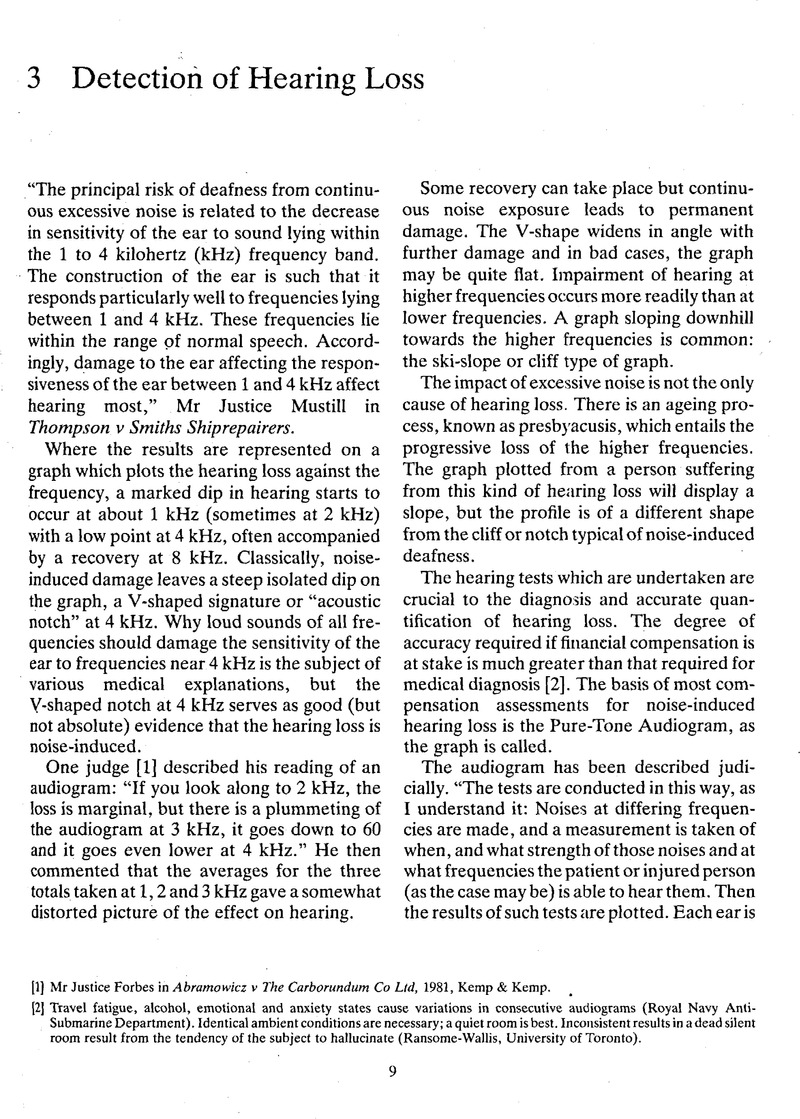No CrossRef data available.
Article contents
3 Detection of Hearing Loss
Published online by Cambridge University Press: 09 November 2023
Abstract

- Type
- Other
- Information
- The Journal of Laryngology & Otology , Volume 100 , Issue S11: Forensic Audiology , 1986 , pp. 9 - 10
- Copyright
- Copyright © JLO (1984) Limited 1986
References
[1] Mr Justice Forbes in Abramowicz v The Carborundum Co Lid, 1981, Kemp & Kemp.
[2] Travel fatigue, alcohol, emotional and anxiety states cause variations in consecutive audiograms (Royal Navy Anti-Submarine Department). Identical ambient conditions are necessary; a quiet room is best. Inconsistent results in a dead silent room result from the tendency of the subject to hallucinate (Ransome-Wallis, University of Toronto).
[3] Psychological injury is compensable under English law e.g. nervous shock in Brice v Brown [1984] 1 All ER 997 tain Trugden v Monsanto Chemicals, 6 April 1971, Winchester Assizes, Mr Justice Lawton was not impressed by inconsistencies in the audiogram when the claimant alleged psychogenic deafness after barotrauma. The claimant was also found to be unreliable in court.


